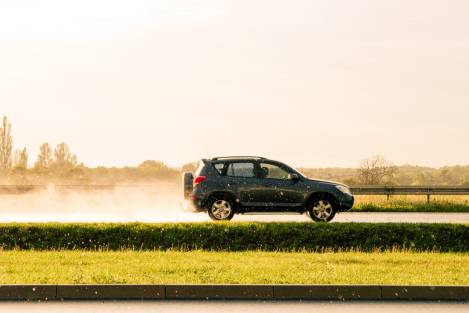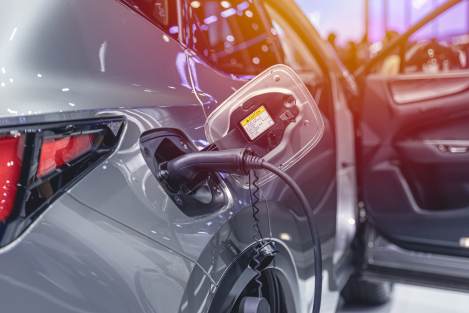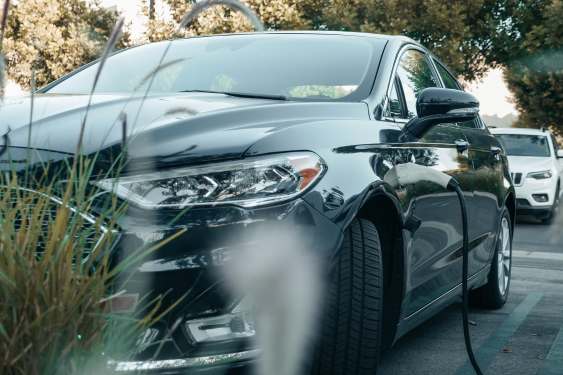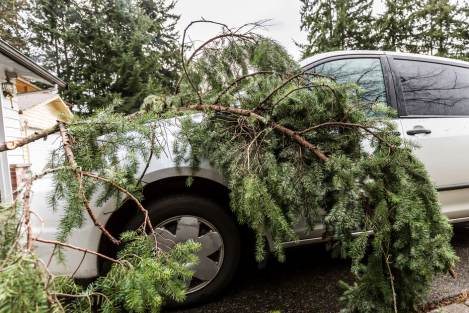Apr 1, 2024
Drive safe in the rain with these 25 tips
 Driving in the rain requires extra caution and attention to ensure your safety, that of your passengers, and other road users.
Canadians experience a wide range of conditions on the road – from icy winter driving to hazy views when driving in the fog. In an article from CTV, they found that the risk of deadly car crashes increases by 34% during rain, snow, and ice due to wetter roads, according to a recent study published in the Bulletin of the American Meteorological Society.
As insurance experts, we want you to avoid collisions and claims. So, when you drive in the rain, follow these tips to stay safe.
Driving in the rain requires extra caution and attention to ensure your safety, that of your passengers, and other road users.
Canadians experience a wide range of conditions on the road – from icy winter driving to hazy views when driving in the fog. In an article from CTV, they found that the risk of deadly car crashes increases by 34% during rain, snow, and ice due to wetter roads, according to a recent study published in the Bulletin of the American Meteorological Society.
As insurance experts, we want you to avoid collisions and claims. So, when you drive in the rain, follow these tips to stay safe.
Why is driving in rain dangerous?
When it rains, roads can become slippery, especially near intersections. Rainwater can mix with oil and other vehicle fluids that have leaked into the pavement, making the surface slick. Additionally, heavy rainfall can cause puddles or standing water on the road, increasing hydroplaning risk. Rain can also affect visibility and make it more challenging to stop.
25 Tips for safe driving in the rain
Driving in the rain can be dangerous. Keep yourself and others safe by following these safety tips.
- Drive slow: Reduce your speed when driving in the rain. Wet roads decrease traction, making losing control of your vehicle easier.
- Maintain a safe driving distance: Increase your following distance to at least three seconds behind the vehicle in front of you. This gives you more time to react to sudden stops or skids.
- Use headlights: Turn on your headlights to increase visibility for yourself and other drivers. Avoid using high beams, which can reflect off rain and reduce visibility.
- Be cautious at intersections: Drivers should approach intersections cautiously and be prepared to stop, especially on wet roads where vehicles may skid, particularly when braking suddenly.
- Avoid using cruise control: It's important to turn off when driving in rainy conditions to avoid losing control of the vehicle on slippery roads.
- Check the tread on your tires: It's important to have sufficient tire tread to avoid hydroplaning, especially on wet surfaces. Bald tires are more prone to losing traction.
- Maintain correct tire pressure: Proper tire pressure is crucial for traction on wet and dry roads. Check your tire pressure regularly, especially before long trips or during rainy seasons.
- Avoid puddles: Steer clear of standing water and puddles on the road. It's difficult to gauge the water depth, and driving through deep puddles or hidden potholes can cause hydroplaning or damage to your vehicle.
- Signal early: It's important to signal your intentions early, especially in rainy conditions, which can impair visibility.
- Stay focused: Keep your attention on the road and avoid distracted driving, such as cell phones or adjusting the radio.
- Keep both hands on the wheel: Maintain a firm grip on the steering wheel with both hands, especially in slippery conditions, to improve vehicle control.
- Drive smooth: Making smooth and gradual movements when steering, braking, or accelerating is important. If you make sudden maneuvers, it can lead to skidding or losing control.
- Watch for hydroplaning: It's important to be aware of hydroplaning, which occurs when your tires lose contact with the road surface due to a layer of water. If you feel your vehicle hydroplaning, ease off the accelerator and steer straight until you regain traction.
- Preventing foggy windows: Use your windshield wipers and defrosters as needed to keep your windshield clean and clear.
- Brake early and gently: It is important to start braking earlier than usual and apply the brakes gently to avoid skidding. Slamming on the brakes can cause your vehicle to slide on wet roads.
- Avoid sudden lane changes and movements: When driving in wet conditions, avoid sudden lane changes as they can disrupt traffic flow and increase the risk of accidents. Stick to your lane, maintain a steady speed and avoid speeding.
- Plan your route ahead of time: Before leaving, check the weather and plan your route to avoid flooding or poor drainage areas.
- Be patient: Exercise patience and allow extra time for your journey when driving in the rain. Rushing and road rage increases the likelihood of accidents.
- Consider pulling over: If heavy rain or a thunderstorm reduces visibility, stay calm and pull over to a safe location.
- Keep windows clear: Prevent windows from fogging by using your vehicle's defrosters and air conditioning, which are essential for maintaining visibility in the rain. If you have any cracks in your windshield, consider getting them repaired.
- Watch out for wet leaves and debris: Exercise caution when driving over wet leaves on the road, as they can be as slippery as ice. This is particularly important when braking or turning. (For more tips, check out our article on driving in autumn.)
- Be mindful of windy conditions: Rainstorms often come with strong winds, affecting your vehicle's handling, especially on highways and bridges. Keep a firm grip on the steering wheel and be prepared for gusts.
- Avoid flooded areas: Never drive through flooded roads or areas with fast-moving water. Even shallow water can sweep your vehicle away or cause engine damage.
- Know your vehicle: Familiarize yourself with how your car performs in wet conditions to drive safely and confidently. be sure you follow a car maintenance schedule so your vehicle runs to its best and safest level.
- Stay informed: It's important to stay up-to-date on road conditions and weather updates when embarking on long journeys. To make informed driving decisions, tune in to radio broadcasts or use weather apps to obtain valuable information.

Driving in the rain FAQs
Rain and driving at night can reduce visibility for everyone – it is important to drive according to the conditions. To improve visibility in the rain, ensure that your glasses prescription is current, use low beams, and limit distractions.
There is no specific speed limit when driving in the rain, but it's important to remember to slow down when road conditions are poor. If visibility is limited, the maximum speed should be determined by the distance it would take to stop suddenly if something unexpected appears in front of you. In such situations, you may have to reduce your speed by 10-20 km/h from the set speed if the rain is heavy.
You should use your low beams when driving in the rain, as high beams can reflect off the rain and decrease visibility.
You can’t predict the weather, but you can plan ahead
To reduce the hazards of driving in wet weather and reach your destination safely, follow these 25 tips. Always remember that arriving a bit late is better than jeopardizing your safety by driving too fast on a rainy day. Additionally, ensure that your Ontario car insurance is up-to-date in case of an accident.





